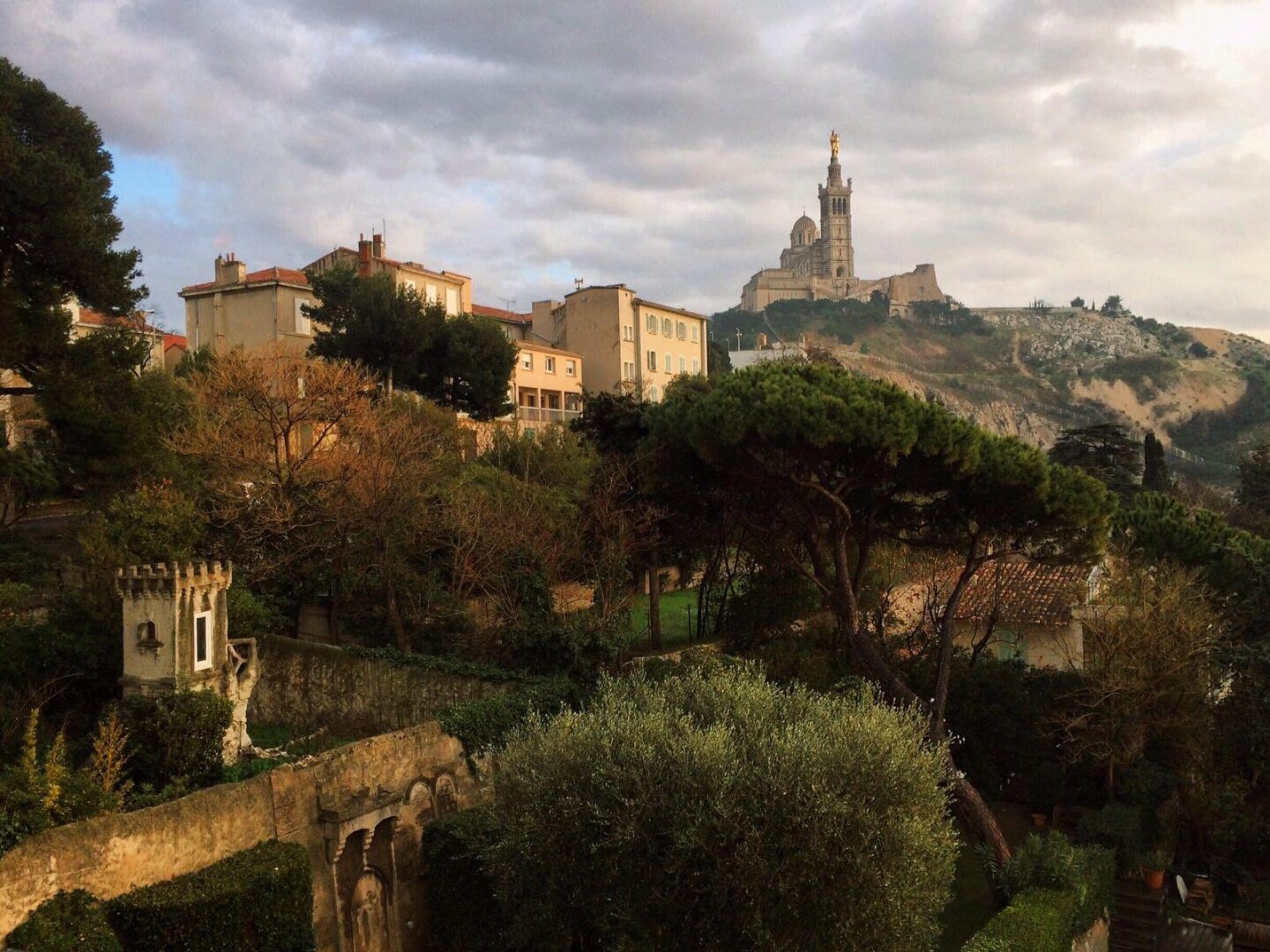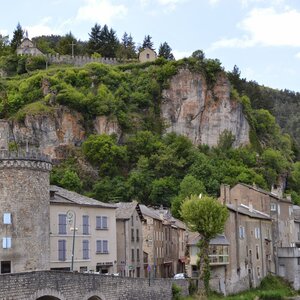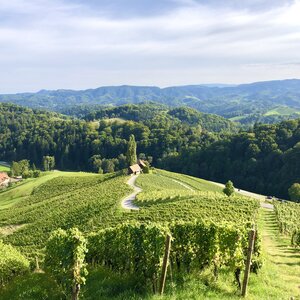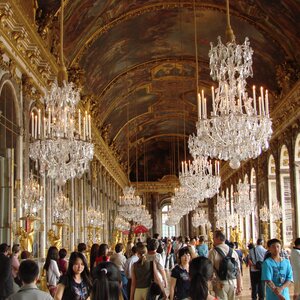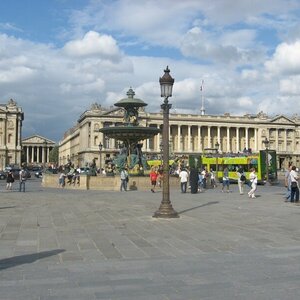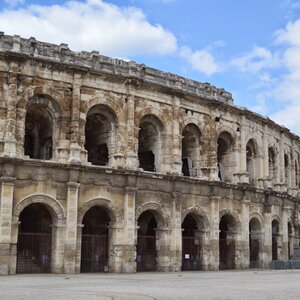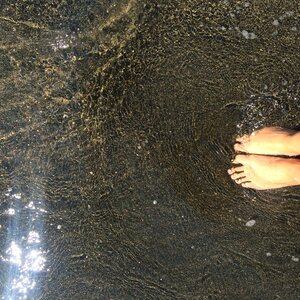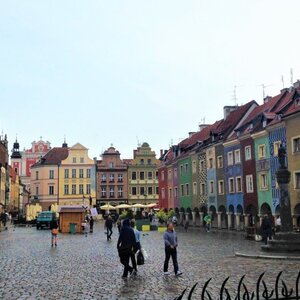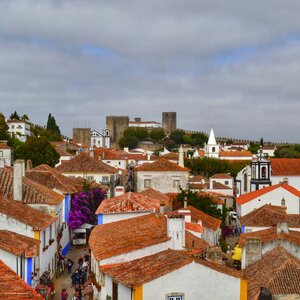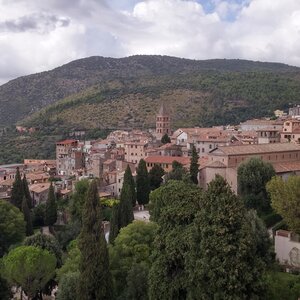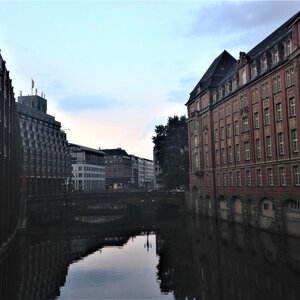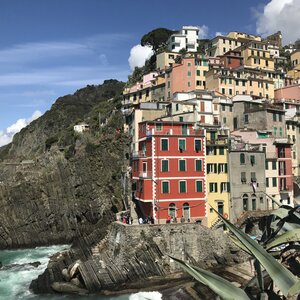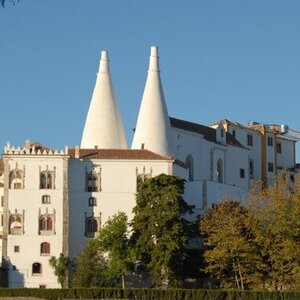The starting point of a walking tour of Marseille is the old port. There are three reasons for this. Firstly, it is an attraction in itself: in the mornings they sell freshly caught fish, and in the evenings the public admires the sunset and moored yachts, sitting on the terraces of restaurants and tasting bouillabaisse made of the same fish. Secondly, the train station and tourist office are within walking distance. Here is also the berth of cruise liners and ships that take you to the Chateau d’If and Friulian Islands with their famous snow-white rocks of Calanques. Finally, it is in the old port that the local landmark roads — the famous Rue des Canebières, the Pannier quarter and the main cathedral of the city Notre Dame de la Garde — are closed.
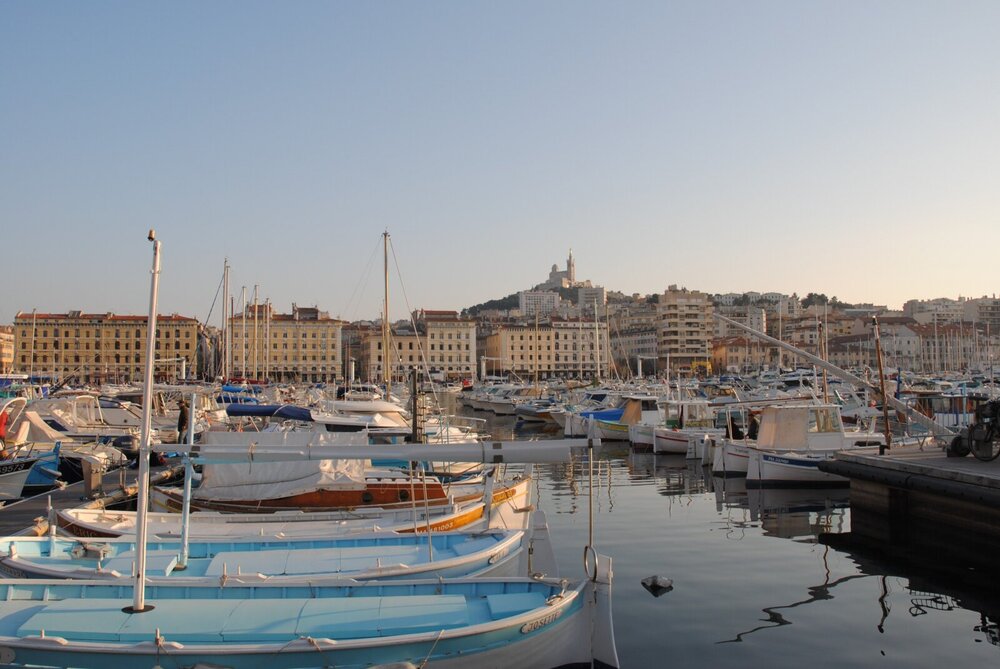
Rue Canebiere (la rue Canebiere)
From St. Charles station we walk along Marseille’s «Champs Elysees» — La Canebière. In 15 minutes it will lead you straight to the old port, and on the way you will feel the flavor of the maritime city. The Marseille Tourist Office is also located here in the house number 11, where you can and should arm yourself with a free map of the city. Office opening hours: 9:00—18:00 (daily).
In addition to a map of the city with four tourist routes of various lengths marked on it, you can buy a «Marseille City Pass» card at the office — a useful purchase that allows tourists to save time and money. We choose the City Pass variant with a validity period of 24 hours, costing 26 €. With it you can use the local metro, buses, streetcars, visit some city museums, take part in a walking tour of the city with a French or English-speaking guide, visit the Chateau d’If or another Frioul island of your choice, make a city tour of the city on a tourist steam train.
Le Panier.
For those who came to Marseille by sea, it is convenient to start exploring the Pannier quarter from la place Joliette, located at the beginning of the port. This is where the cruise ships arrive.
Pannier is an old neighborhood in Marseille. It was destroyed during the Second World War and then completely rebuilt according to old drawings and designs. Locals do not pity this quarter: it is atmospheric, but dirty and full of graffiti (the second name of the quarter is «Marseille Montmartre»). If you start your acquaintance with Marseille with it, it may form a wrong first impression, keep this in mind. Still, you can’t miss it, so keep your eyes peeled for the Charité almshouse or the Cathédrale Sainte-Marie-Majeure de Marseille. And don’t let the map out of your hands, for it’s easy to get lost in the labyrinth of narrow streets here.
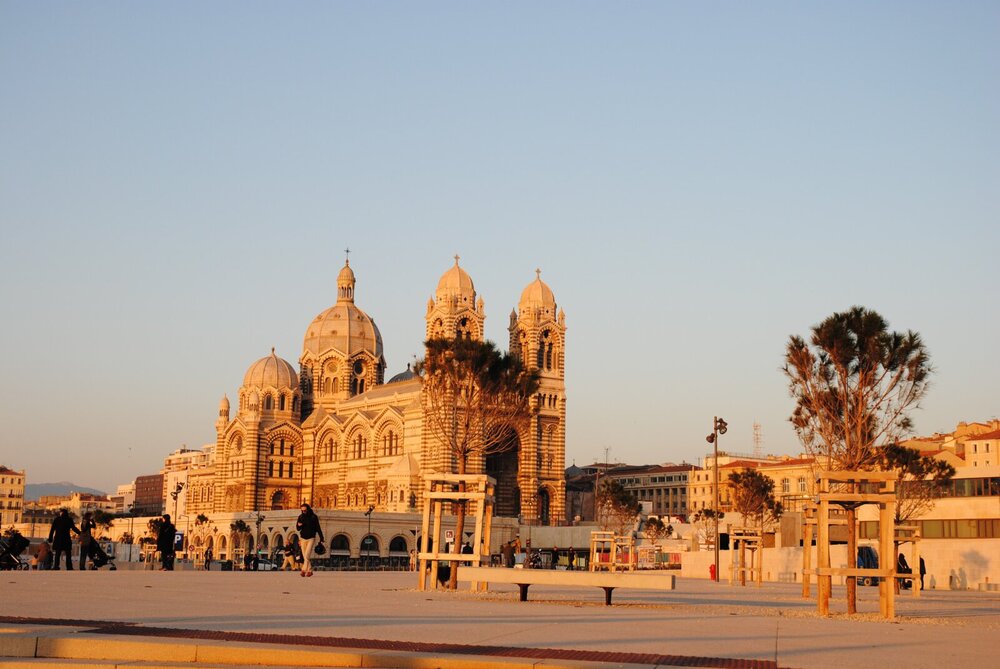
La Vieille Charité.
It is a complex of baroque 3-storey buildings with graceful arches and galleries. They stand in a square and form a closed courtyard with a chapel in the center. It is hard to believe that such beauty was built for the beggars and the poor who flooded Marseille in the 17th century.
Today it is a cultural center, including both permanent museums and temporary exhibitions.
- Working hours of the cultural center: 9:30—18:00 (weekend — Monday).
- Website of La Vieille Charité Cultural Center
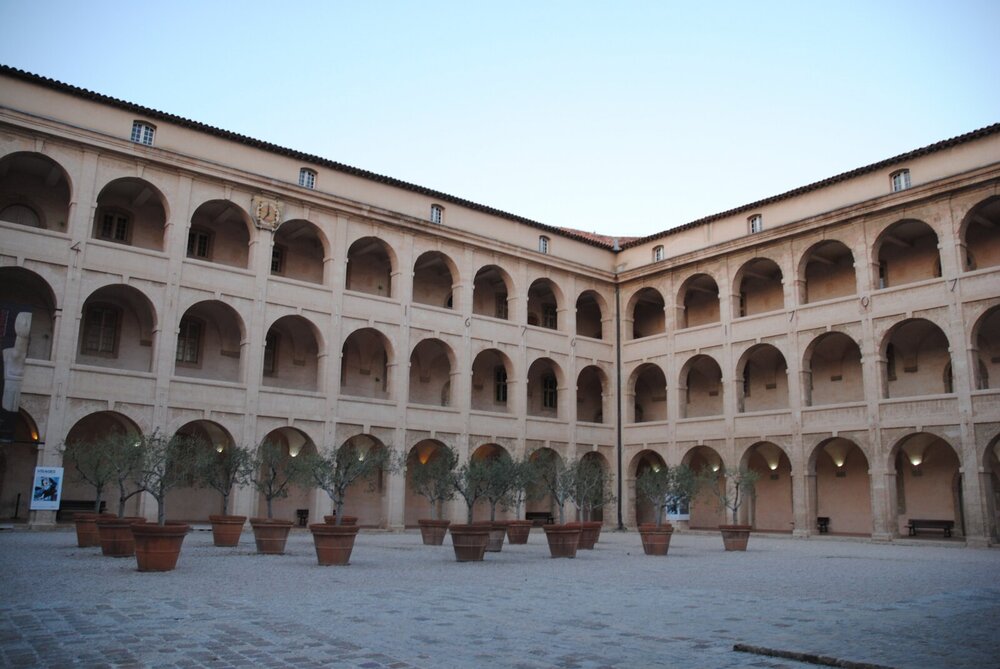
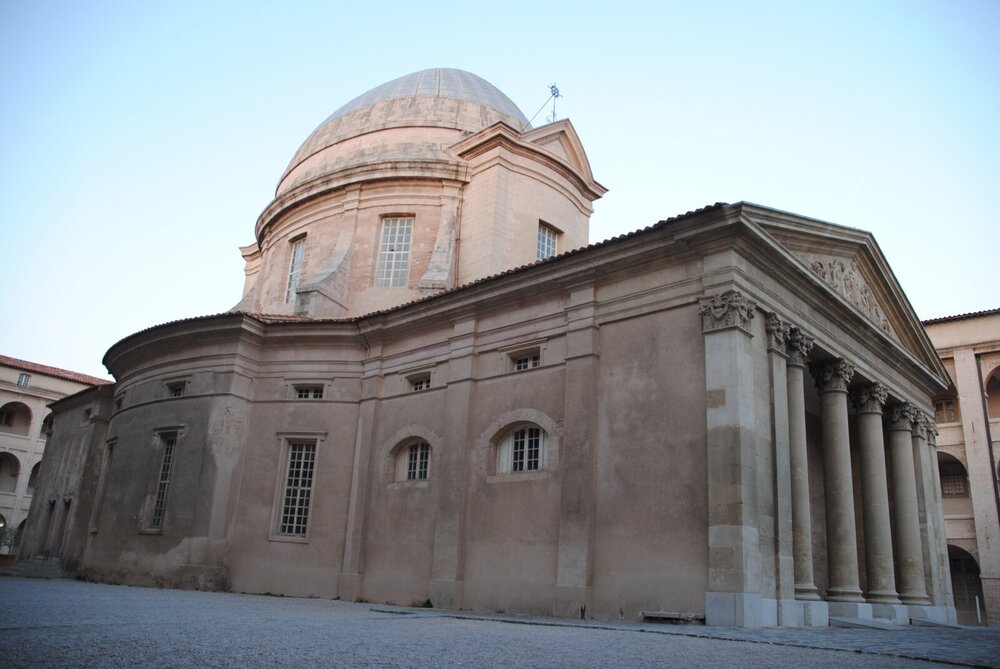
The old port of Marseille
It is a whole complex of buildings that you can spend a day exploring. On opposite sides of the entrance to the old port are two fortresses: the medieval Fort St. Jean and the Fortress of St. Nicholas. The old port is divided by two banks, the bridge between which was blown up by the Germans during World War II. It was never rebuilt and the only way to get to the old port is by water, with boats running at 0.5 € per person per side. The schedule of the boats is given at the ticket office together with the ticket.
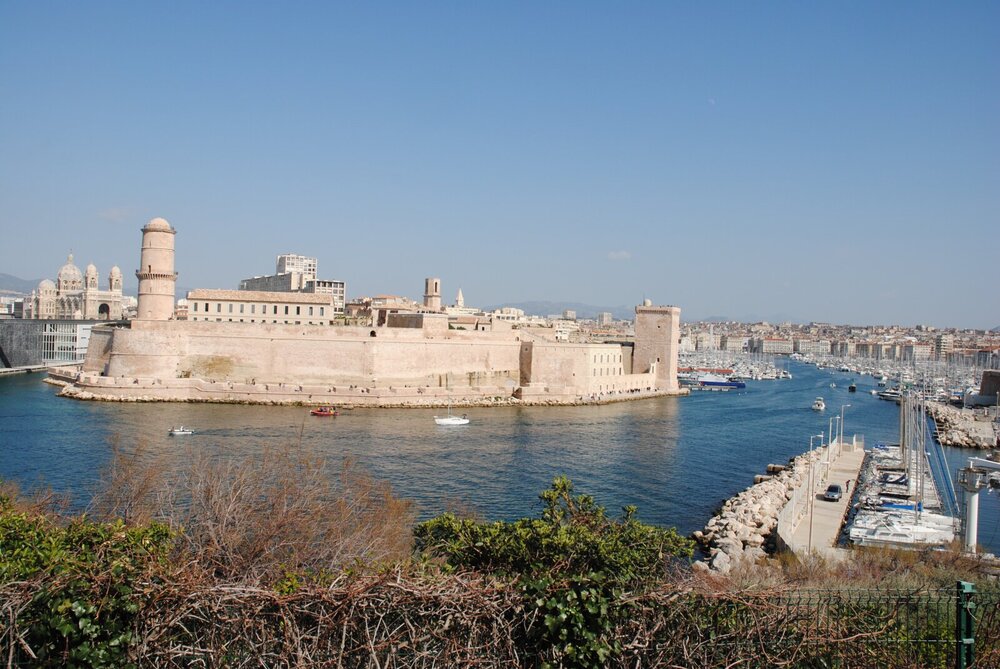
Chateau d’If
From the Navette du Frioul marina, the Frioul-If-Express boat trip to the Frioul Islands and the Château d’If leaves. Even if it’s very hot, you can refresh yourself with this short boat trip (20 minutes) and spend an hour exploring the castle fortress — if you’re lucky and the fortress isn’t closed for another renovation.
From the upper terrace of the fort you can sunbathe on a special platform while waiting for a ship or take a photo of Marseille from the sea and a panoramic view of the harbor.
- Opening hours of the castle-fortress: 9:30—18:00.
- A ticket for the ship and a visit to the Chateau d’If are free of charge to the owner of a city pass. The ship schedule is given together with the tickets at the ticket office, and when visiting the castle museum — an information booklet in 3 languages, including Russian.
- Website: Chateau d’If
MuCem Museum of European Civilization and the Mediterranean
If it is windy and there are no boats, it is better to visit the MuCem exhibition center, which is connected by a bridge to the medieval Fort Saint Jean. The bridge may be closed in case of high winds. At MuCem you are encouraged not to see exhibitions, but to enjoy the impressive panoramic view of the sea from the openworked terrace. Here you can also have a coffee and lie on a sun lounger.
- Admission to MuCem, without visiting local museums, is free with a City Pass card.
- Opening hours: 11:00—19:00 (weekend — Tuesday).
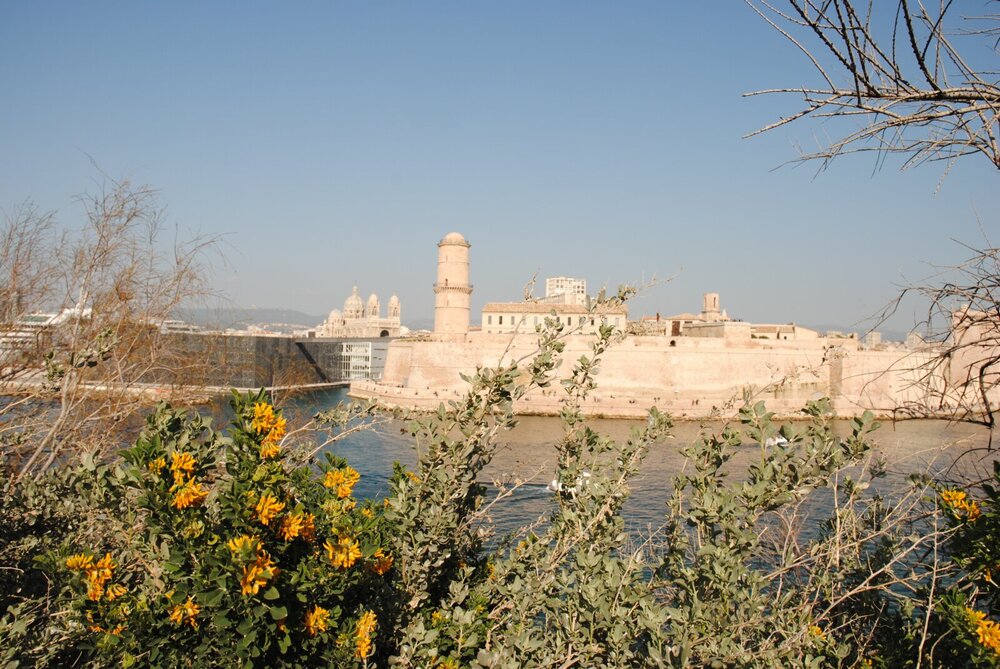
Soap Museum
It is impossible to visit Marseille and not buy one of the most iconic specialties of Provence — natural soap, consisting of 72% olive oil.
There are soap shops all over the old town and in the harbor area. The Soap Museum, on the other hand, is located in the old port. It has a store where you can buy bunches of dried lavender, sachets and cubes of Marseille soap with a characteristic emblem — a pressed letter «M».
- Museum opening hours: 10:00—19:00.
- Website: Le Musée du Savon de Marseille
Notre Dame de la Garde Basilica (Notre Dame de la Garde)
Marseille’s most visited landmark, the Basilica of Notre Dame de la Garde, topped by an 11-meter high gilded statue of the Virgin Mary with a baby in her arms, sits on the highest point of the city. It can be seen from everywhere.
From the old port to Notre Dame you can walk (20—25 minutes). But, if your physical condition leaves much to be desired and the sun is baking, I advise you to take a tourist streetcar or bus № 60 (free of charge for City Pass holders). They will save time, energy and bring you directly to the foot of the Marseille shrine. All you have to do is climb up the stone stairs to the shrine.
The cathedral is active and services are held there. Entrance inside and tourist excursions are free, but you need to sign up in advance. The interior decoration of the basilica is impressive, inside there are sea-themed paintings and ship models.
From the observation deck you will have a beautiful view of the port and the Friulian Islands, and Marseille itself will be in the palm of your hand.

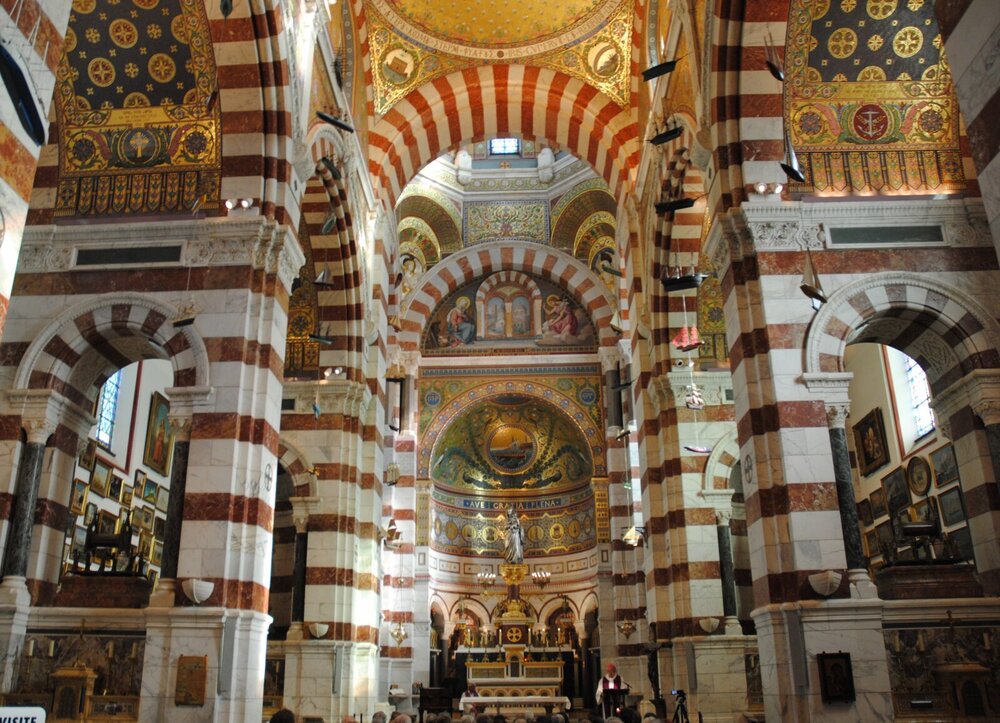
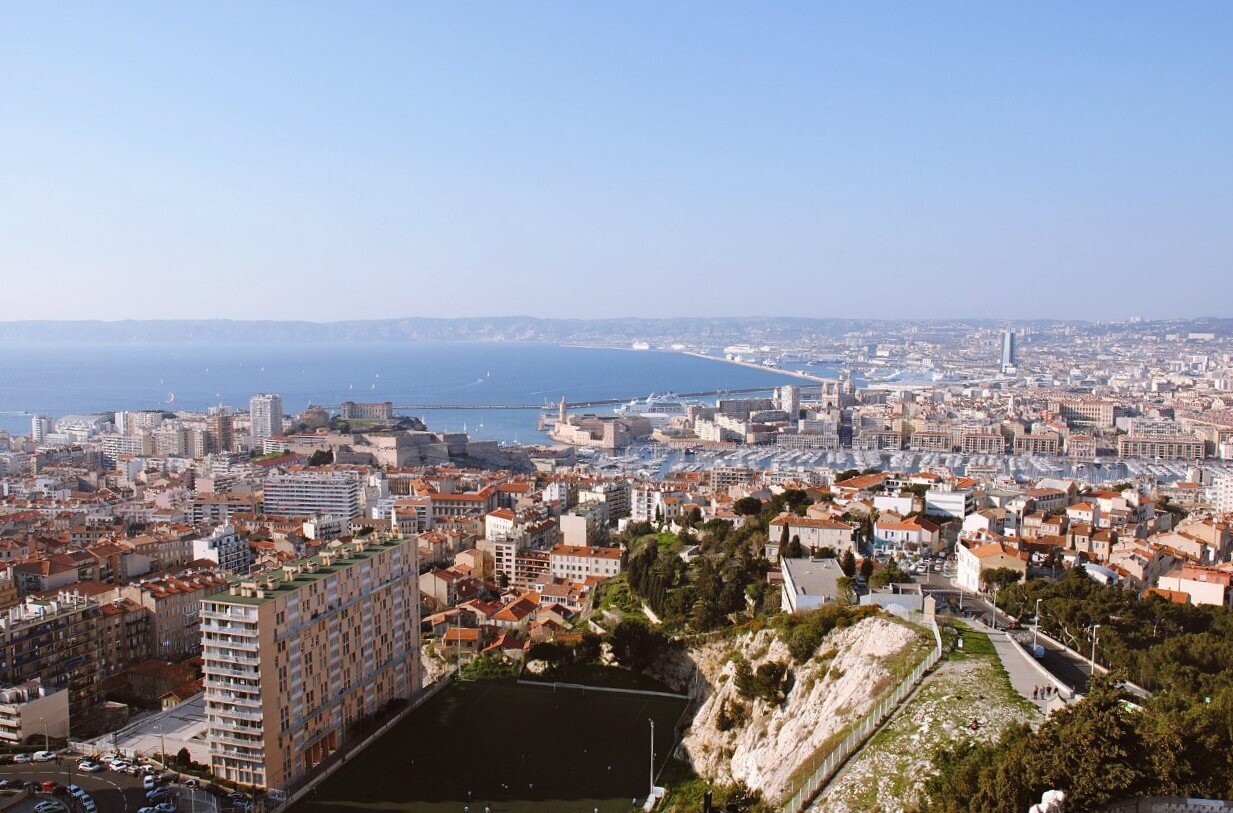
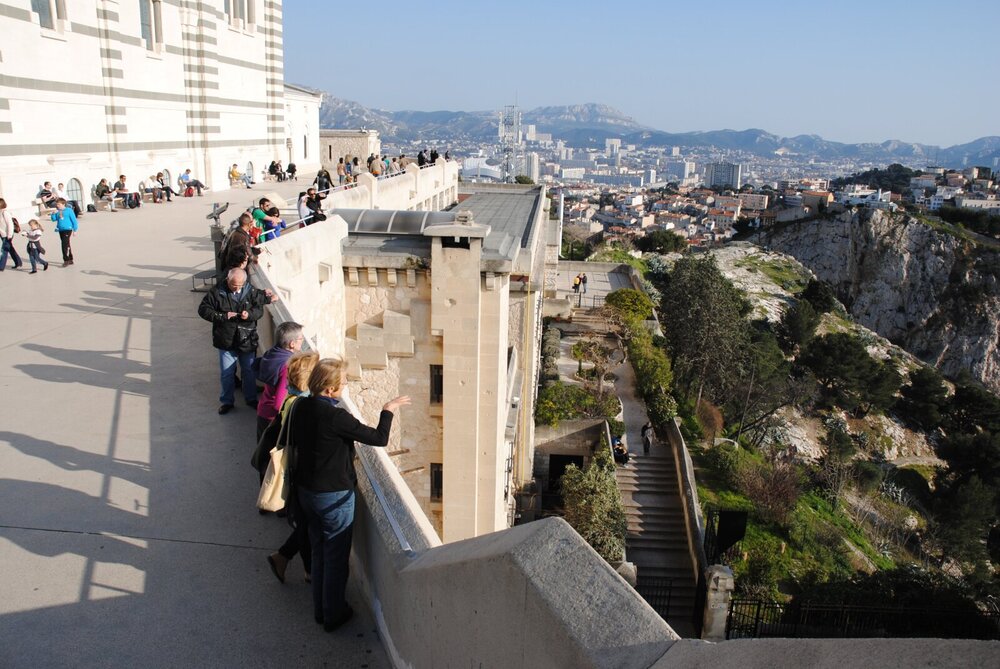
There is a small park under the basilica, and in it is Café Sepia, with a summer terrace, panoramic views and delicious cuisine. Lunch for one person is about 26 €. You have to come early (before 13:00) to get a table, as this place is popular. You can also come here for a coffee and dessert before 12:00 or after 14:30, when people are leaving.
An evening in Marseille
From the cathedral to the old port is about 15 minutes uphill. Follow the route of bus number 60 to Faro Park. Stop there for another beautiful view of Fort St. Jean and the best sunsets in Marseille.
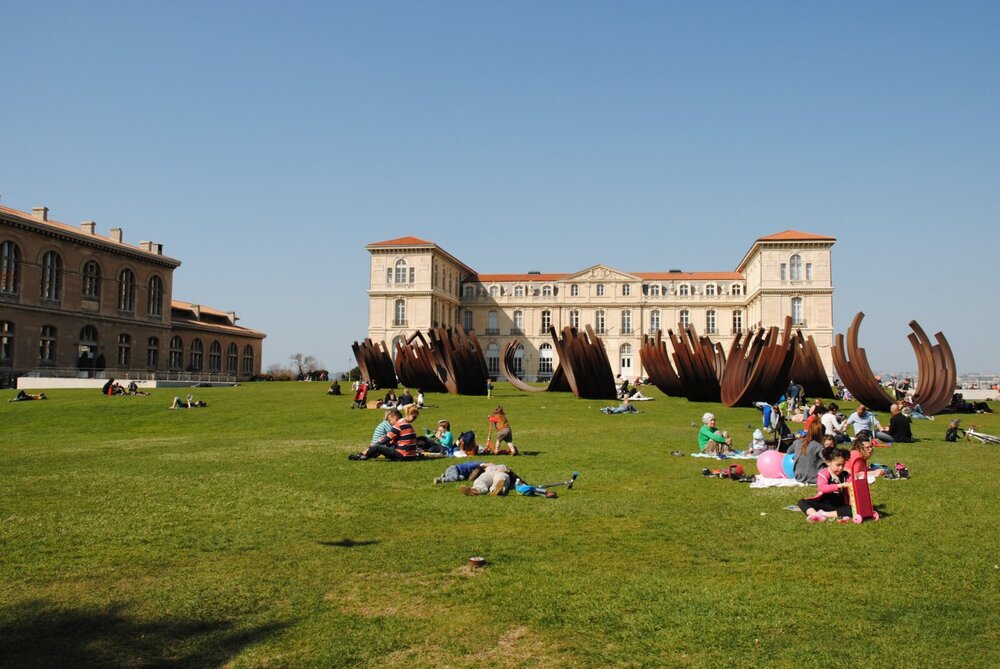
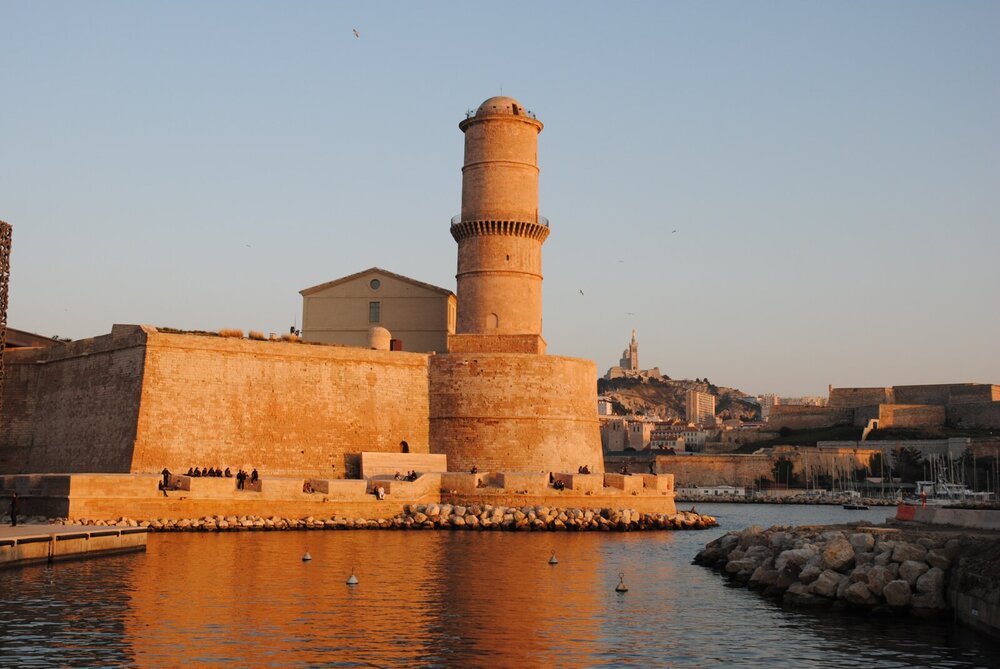
If you walk from Faro along the sea to the left, you will reach the public sandy beach of Catalan. Entrance is free. Here you can dip your weary tourist feet into the Mediterranean Sea and take a breather.
If you go from Faro to the right, to Fort Saint-Jean, you have a chance to watch a free summer open-air movie. It starts at 19:00 or 20:00, depending on the time of sunset. The audience is diverse, relaxed and positive. Everyone comes with their own «seats».
You can stop and spend the evening at Le Miramar restaurant, just before reaching St. Jean, to try the famous Marseille bouillabaisse fish soup. It’s not cheap, but it’s worth it. The price of a large portion is about 60 €.
10 things to do in Marseille in 1 day
- Walk down the main and longest street of the city, Canebière.
- Visit Marseille’s oldest neighborhood, the Pannier district, with its narrow streets and the extremely beautiful Vieille Charité almshouse.
- Climb to the highest point of the city, the Notre Dame de la Garde Cathedral, and see Marseille at your feet.
- Walk down to the old harbor and take stunning photos in the pre-sunset light.
- Stock up on Provençal specialties — flavorful and natural.
- Visit the MuCem exhibition center to see how history and modernity are closely linked in Marseille.
- Take a boat to the Chateau d’If and see with your own eyes where the Count of Monte Cristo languished.
- Try the famous bouillabaisse soup and not be disappointed by its price.
- Take a breather at the city’s Catalan Beach, plunging the tourist’s weary feet into the Mediterranean Sea.
- Sip a coffee or pastis — the local aniseed vodka — on the terrace of a café in the old port and plan the next day, realizing that Marseille won’t let you go.
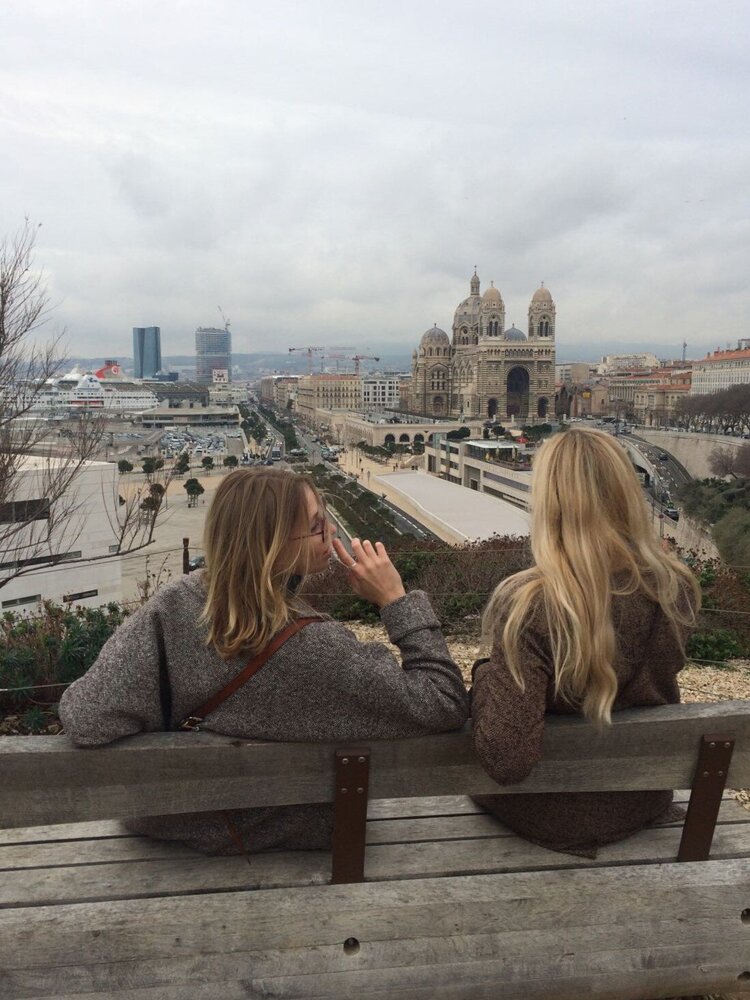
Photos by Maria Barybina were used.

